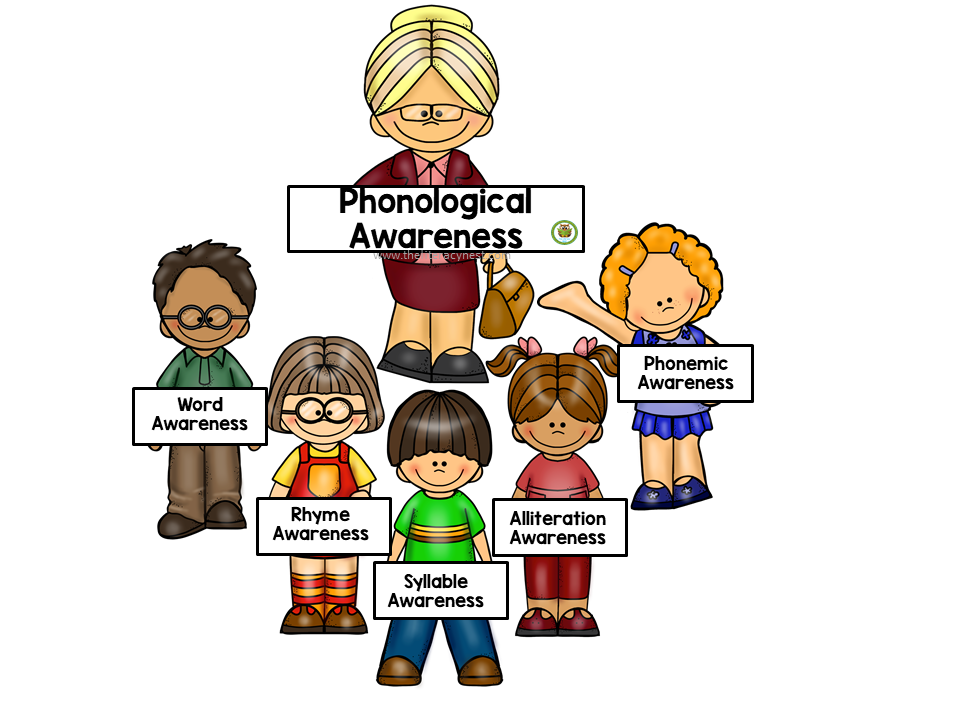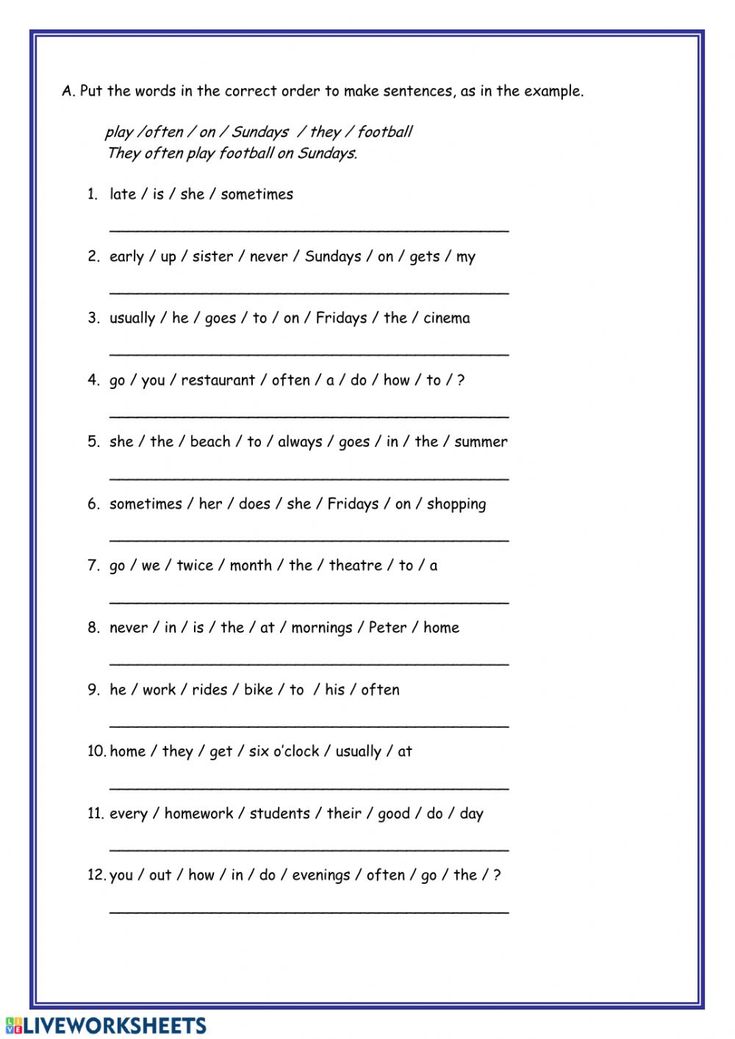Story of a duck
The Story of The Ugly Duckling
© Written by Tasha Guenther and illustrated by Leanne Guenther
Fairy tale based on the original tale by Hans Christian Andersen
There was once a mother duck. This mother duck had no children yet for none of her eggs had hatched.
She waited patiently day and night for her babies to hatch. One day, as she was sitting on her nest of eggs the mother duck felt something move beneath her.
CRACK!! CRACK!! CRACK!! CRACK!!
Filled with happiness, the mother duck watched as, one by one, her eggs
hatched. She was so excited to lead her children to the pond and teach them all the ways of being a duck. Unfortunately for the mother duck, one egg was left to hatch. This egg was larger than
the rest.
This egg was browner than the rest. Her little ducks impatiently waited for two more days and nights.
“I want to go to the pond, Mother,” one baby duck quacked.
“Let’s go! Let’s go!” two more quacked excitedly.
But the mother duck made them all wait, for she promised herself that she would love all her children the same.
At the crack of dawn on the third day of waiting, the large brown egg began to vibrate. It shook and shook as all of the ducks watched in awe.
Then suddenly: CRAAAAACK!!!
Out from the large brown egg popped a large, strange looking head of a bird that didn’t look much like a duck. This baby’s beak was a little too long, his feathers were a little too scruffy, and his face was a little too ugly!
But, nonetheless, the mother duck promised herself that she would love all her children the same.
She led her children into the nearby pond and began to teach each duckling how to be a proper
duck.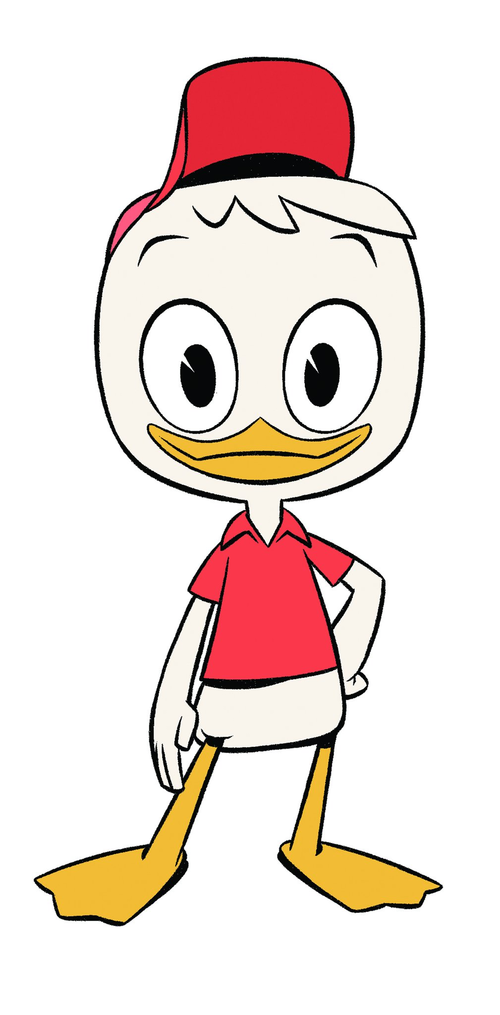
She taught them how to quack. Each duckling quacked.
QUACK!! QUACK!! QUACK!! QUACK!!
The ugly duckling quacked.
CRAOAUK!!
All of the ducks in the pond stared at the ugly ducking and began to laugh. The mother duckling sadly took her little ducklings over to a different part of the pond. The other ducklings were giggling and making fun of the ugly one. Two nearby ducks swam by and pecked at the ugly duckling’s feathers.
“This one looks nothing like your others!” one jested.
“This one is ugly!” the other scoffed.
The ugly duckling hung his head in shame. The mother duckling became very embarrassed of her ugly duckling and made him stay in the corner of the pond while the others practiced swimming, diving, quacking, and splashing.
One evening, as all of the ducks in the pond had gone to sleep, the ugly duckling decided that it was time for him to leave. He knew he was causing his mother distress and he did not want to
live in a place where he felt unwanted.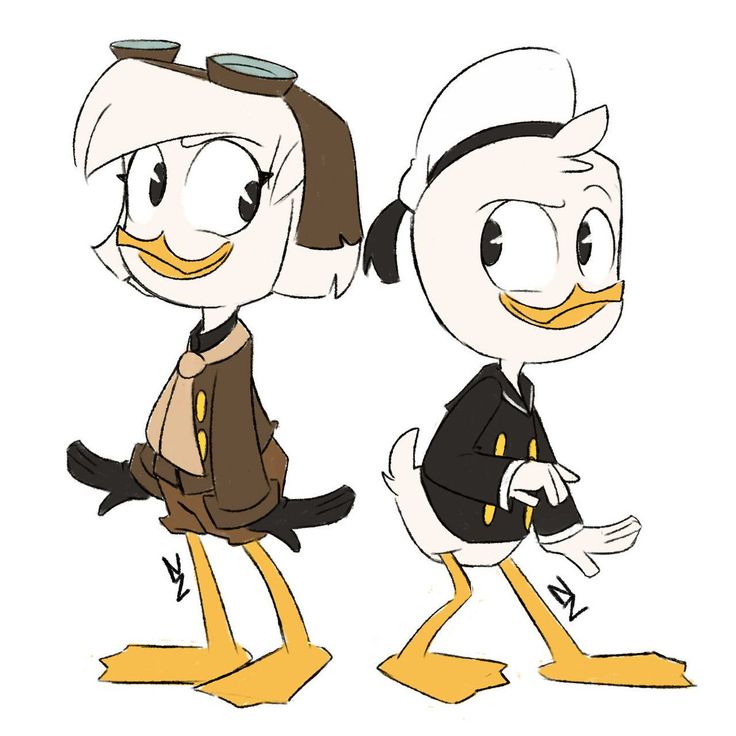
So the little ugly duckling ran away.
He waddled far away from the pond where he was born. He waddled through small marsh plants and large river reeds. He waddled over bundles of sticks and piles of dung. All this waddling made him dirtier than ever.
He approached a new pond that was filled with a family of different ducks. These ducks were happily swimming and quacking. He advanced one of the ducklings who looked to be just a bit larger and older than the ugly duckling.
“Hello there!” beamed the ugly duckling to the other duckling. With this, the new family of ducks turned and stared at the ugly duckling.
“And who are you?” asked the mother duck.
“What are you?” asked the father duck.
“You sure are ugly!” all the ducklings chimed in.
As this family of ducks began to quack and laugh at the ugly ducking, he waddled off again in search of a nicer family to call his own.
He
waddled far away from the pond with the family of ducks.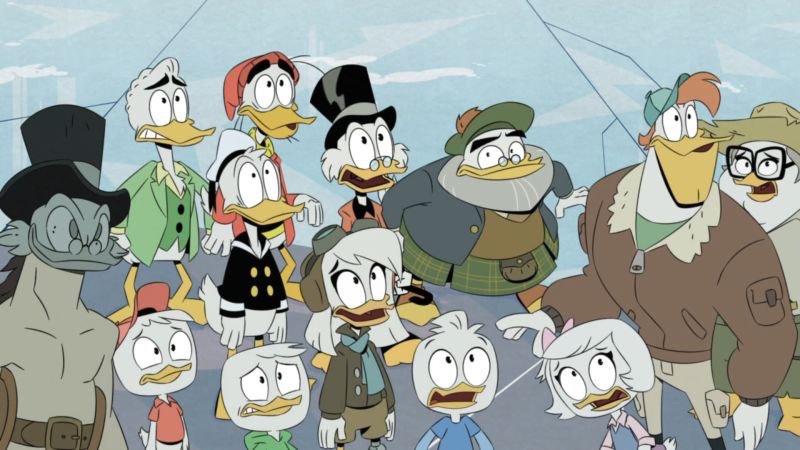 He waddled through small marsh plants and large river reeds. He waddled over bundles of sticks and piles of dung. All this waddling
made him even dirtier than before!
He waddled through small marsh plants and large river reeds. He waddled over bundles of sticks and piles of dung. All this waddling
made him even dirtier than before!
Next the ugly duckling came to an even larger pond filled with a family of geese. The goslings were a brown-gray like he was! Happily, the ugly duckling waddled to the water’s edge, plopped his little body in the water, and swam towards the family of geese. He advanced one of the goslings who looked even larger and greyer than him.
“Hello there!” the ugly ducking happily exclaimed, greeting the gosling. With this, the family of geese turned and stared at the ugly duckling.
“And who are you?” asked the mother goose.
“What are you?” asked the father goose.
“You sure are ugly!” all the goslings chimed in.
As this family of ducks began to honk and laugh at the ugly ducking. Before the duckling could waddle off the geese surrounded him and the father goose said, “Though you are quite strange looking you may stay with us! You are more than welcome to join our family.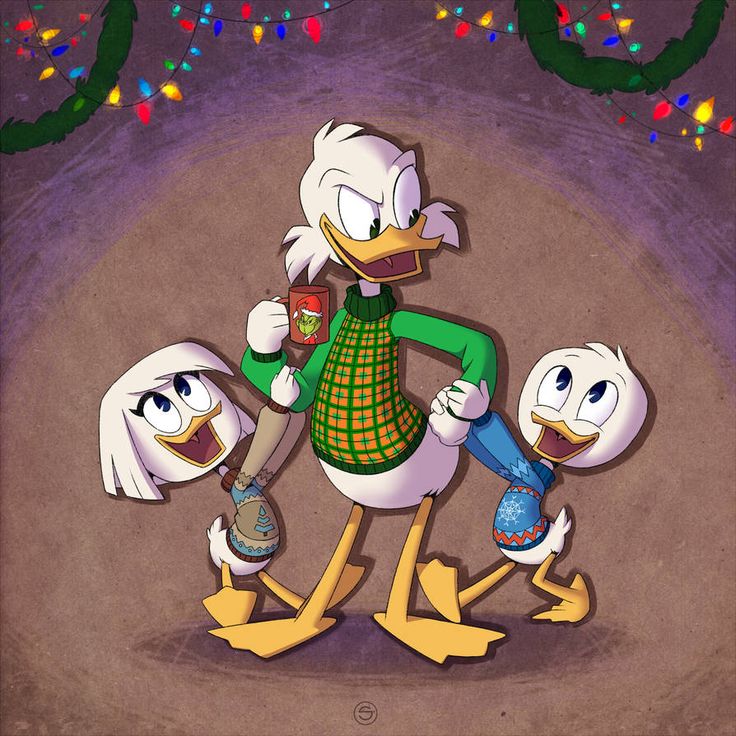 ”
”
The ugly duckling couldn’t be happier. The geese were very kind to him though their honks hurt his ears.
Many days and nights passed and the ugly duckling was living happily with the geese. He loved to play with the goslings and the mother and father treated him like their own. Everything was perfect. Until…
A hunter and his basset hound approached the pond. The hunter began firing off shots at the geese and the hound chased the birds around the pond trying to catch one. The ugly duckling could do nothing but sit still. As the hound approached him, sniffed for awhile and cocked its head, “What are you? You sure are ugly!” it said before it ran off in search of a real goose.
In the midst of the hunter’s ambush, the ugly duckling sadly waddled off once more.
He was growing larger; his feathers were coming in and the ugly duckling was able to fly off the ground. However, the ugly duckling had become very weak and hungry; he
did not have enough strength to fly.
Instead he waddled his way to a small house where he took shelter during the night.
In the morning, the ugly duckling awoke to the sounds of human chatter.
“What is it?” an old woman asked.
“A duck, perhaps?” her husband replied.
“Just what we’ve needed!” the woman exclaimed.
With that, the farmer and his wife allowed the ugly duckling to live with them in the hopes that the duck would lay eggs for them to eat.
They waited and waited… and waited. But nothing happened. The ugly duckling never laid eggs; he did, however, grow larger and harder to take care of.
Though the farmer and his wife had grown fond of the ugly duckling, they had no more room him in their house.
And so, they shooed him out.
“Go find yourself a family that will love you!” shouted the farmer, sadly, as he shut the door.
The ugly duckling hung his dead and waddled far away from the farmer’s house. He
waddled through now frozen marsh plants and large frozen river reeds.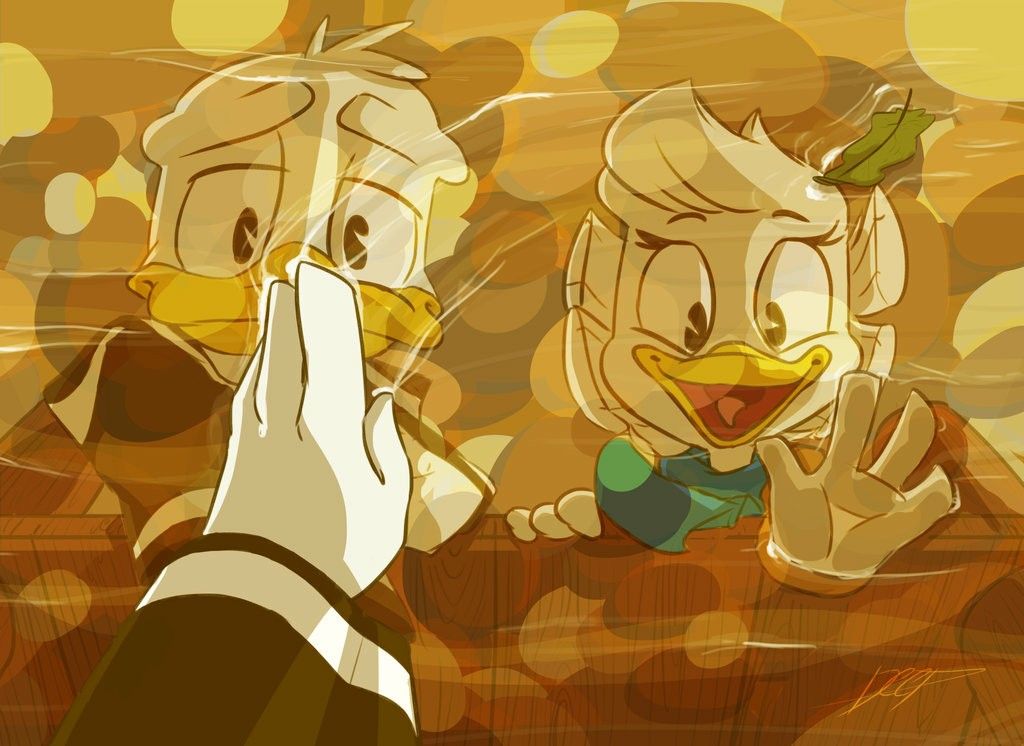 He waddled over frozen bundles of sticks and frozen piles of dung. All this waddling made him colder than ever.
He waddled over frozen bundles of sticks and frozen piles of dung. All this waddling made him colder than ever.
Miraculously, the ugly duckling had survived the cold winter. With spring, all of the frozen ponds melted and the frost evaporated from the marsh plants and river reeds. The ugly duckling was still sad, however.
He approached a crystal clear pond and saw a family of the most beautiful birds he had ever seen - swans.
As he sat by the water’s edge, he didn’t even dare to ask these birds if he could join, for he knew if he was too ugly to live with ducks, geese, and humans, he was surely too ugly to live with a gorgeous bevy of swans.
Suddenly, a swan gracefully glided through the water over to where the ugly duckling was sitting.
“My, my! Your feathers are the whitest I have ever seen. How they gleam in the sun!” the swan exclaimed to the ugly duckling.
Confused, the ugly duckling wandered to the water and peered at his reflection.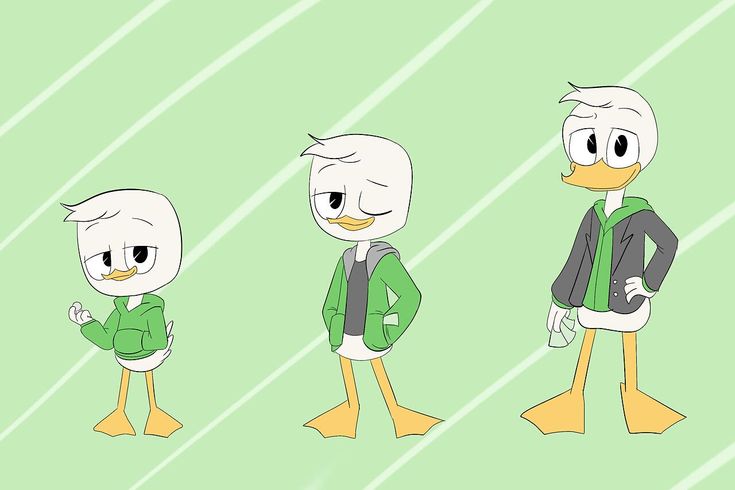 Much to his surprise, he was not an ugly ducking, for he was not a duck at all! He was a beautiful white swan with a
long and elegant neck.
Much to his surprise, he was not an ugly ducking, for he was not a duck at all! He was a beautiful white swan with a
long and elegant neck.
He entered the water and joined his new family.
One day, as the swans were swimming, a man and his wife came strolling by with their child. The swan recognized this couple as the farmer and his wife.
They approached the edge of the pond and began to feed the swans breadcrumbs.
The farmer looked at the once ugly ‘duckling’ and said, “It looks like you found yourself a niche – a family. You are the most beautiful swan I have ever seen.”
For the rest of his days, the swan lived happily with his new swan family and was greeted often
by the farmer and his family.
Printable version of this story
My name is Tasha Guenther. I currently live in Hamilton, Ontario, Canada, while I finish my Ph.D. in Cultural Studies with a concentration in digital cultures at McMaster University.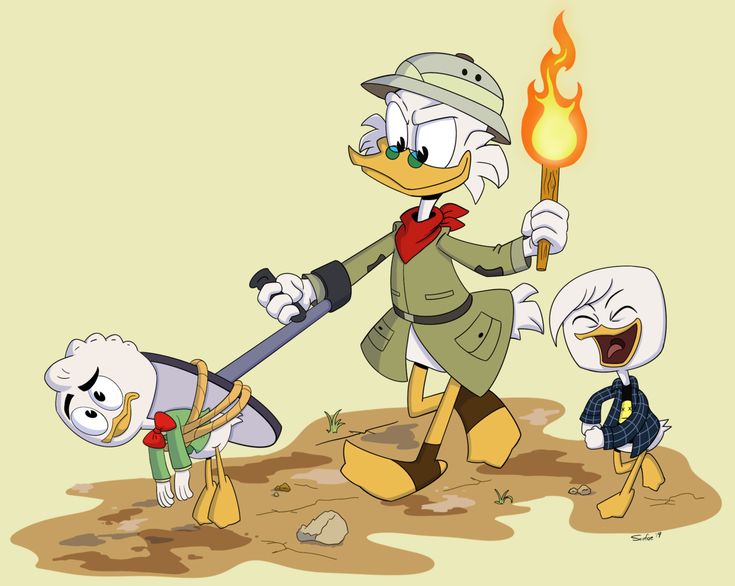 I am an avid academic essay/book chapter writer, but I also enjoy writing short stories and non-fiction pieces. You can read more of my DLTKsCrafts work here!
I am an avid academic essay/book chapter writer, but I also enjoy writing short stories and non-fiction pieces. You can read more of my DLTKsCrafts work here!
Alongside my learning, studying, and thinking about digital platforms and critical theory, I appreciate long conversations with close friends, reading poetry, and taking photos of my cat. Learn more about me here or connect with me on my Instagram, Twitter, VSCO, and Facebook accounts.
The Ugly Duckling Story - Bedtimeshortstories
This is an amazing short story for kids, the ugly duckling story. Once upon a time, there was a duck. She lived in the forest. One day she laid some eggs. After warming them carefully, the duck waited for the eggs to hatch. As she watched, three of her eggs cracked and three lovely ducklings came into the world.
Birth Of The Ugly DucklingThe mother duck was overjoyed but the largest egg was still there. At last the great egg burst but it was large, grey, and ugly.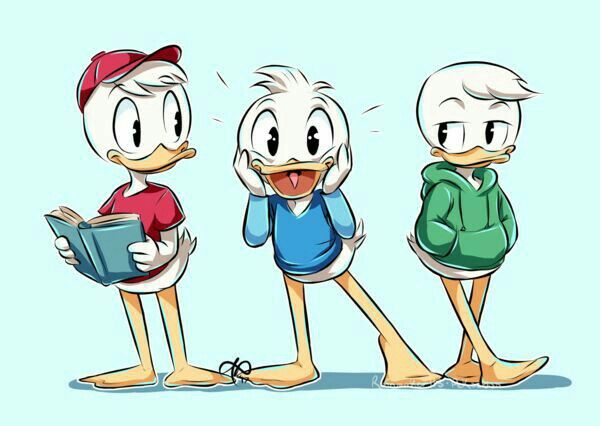 The mother duck looked at it. “Oh no! He can’t be my baby. How ugly and different he is from all my other children.”, mother duck said. The ugly duckling was hated by his brothers and sisters. They would often mock at him. Also, Read The Three Bears and Goldilocks.
The mother duck looked at it. “Oh no! He can’t be my baby. How ugly and different he is from all my other children.”, mother duck said. The ugly duckling was hated by his brothers and sisters. They would often mock at him. Also, Read The Three Bears and Goldilocks.
The Ugly Duckling Story – www.bedtimeshortstories.com
The Harsh RealityThe ugly duckling felt so sad that he ran away from home one day. Walking alone, the ugly duckling came upon a house. As he peeped inside, he saw an old woman sitting idol. At her foot sat a cat and a hen. Suddenly, the woman noticed the duckling.
At first, the woman cuddled the duckling but the very next moment she screamed at him in anger. “Away from here, you ugly duckling”, she said. The duckling ran out of the house. Once again, the poor duckling went walking sadly. He spent the rest of his day and night crying all alone. He felt lonely and miserable but the ugly duckling was hopeful in his heart. Also, read The Ugly Tree Story.
Then, one day, the duckling saw a pond. His eyes lit up in joy as he had seen water after so many days. The ugly duckling hopped of joy. He swam to his satisfaction. But his happiness was short-lived. Winters had started and the cold wind had started to blow. Due to cold weather, the pond had frozen. Now, the ugly duckling couldn’t swim.
A little while later, a kind farmer happened to pass that way. Taking pity on the duckling’s miserable condition, he took him home. The farmer nursed the duckling and soon the bird was well. Then the farmer left the duckling in the pond.
Ugly – No More!One morning, the duckling saw the beautiful swans around him. The duckling was ashamed of himself and bent his head low. He saw beneath the water his own reflection. It was the reflection of a swan. He was no longer a grey, ugly bird. The duckling was amazed. Actually, he had grown into a beautiful swan. Those beautiful swans were his brothers and sisters.
The ugly duckling remembered how everyone used to ignore him. The ugly duckling now heard the swans say that he was the most beautiful among them. Now he was no more the ugly duckling. Also, read A Proud Red Rose.
Don’t forget to check out the printable version of this story on Pinterest from here.Tagged with: the ugly duckling, the ugly duckling short story, the ugly duckling story
All about duck: history, benefits, properties, calories and much more
Duck stories
Today, there are more than 100 species of ducks in the world, the most common of which in our country has become Muscovy duck. The secret of the popularity of this type of bird lies in the fact that it is calm, unpretentious in keeping and not susceptible to diseases. In addition, Muscovy ducks are larger than their relatives (the weight of an adult drake reaches 6 kg, and ducks - 3.5 kg), and their meat contains less fat.
Duck quack has no echo.Only female ducks can quack.
For a long time, ordinary domestic ducks, which are direct descendants of the mallard (wild duck), have been bred in private farmsteads in Russia for a long time to this day. Compared to musky ducks, wild ones are smaller in size, but it is their meat that is traditional for Russian cuisine.
It is believed that the ancient Egyptians were the first to domesticate ducks. It happened over 4000 years ago.
Due to the fact that the cultivation of ducks is not an easy process, duckling is not as widespread as, for example, chicken meat, and is more of an attribute of the festive table than everyday food.
The undisputed leader in the production of duck meat is China. About 2 billion ducks are grown annually in China, which is 80% of the world's duck production.
High flying bird
Duck meat, like other waterfowl, contains a lot of fat. Duck fat improves brain function and has a positive effect on the human cardiovascular system due to the omega-3 and omega-6 unsaturated acids it contains. When consumed in moderate doses, duck fat helps the body get rid of carcinogens. And in order to make meat less caloric, you just need to remove the skin, since it is there that the main fat reserves are concentrated.
When consumed in moderate doses, duck fat helps the body get rid of carcinogens. And in order to make meat less caloric, you just need to remove the skin, since it is there that the main fat reserves are concentrated.
100 grams of domestic duck contains on average:
Proteins - 15.8 g;
Fats - 38.0 g;
Carbohydrates - 0 g.
Duck is rich in vitamins A, B, E, K and minerals, so eating this meat has a beneficial effect on vision and complexion; normalizes metabolism and improves immunity. The high content of easily digestible protein makes duck meat a welcome guest on the table of people engaged in heavy physical and mental labor.
Air threat
Duck meat has many positive properties, but not everyone will benefit from it. People suffering from chronic diseases of the liver and gastrointestinal tract should refrain from eating duck, as duck meat is quite tough and puts a serious strain on the digestive system.
The high fat content makes duck high in calories and high in cholesterol.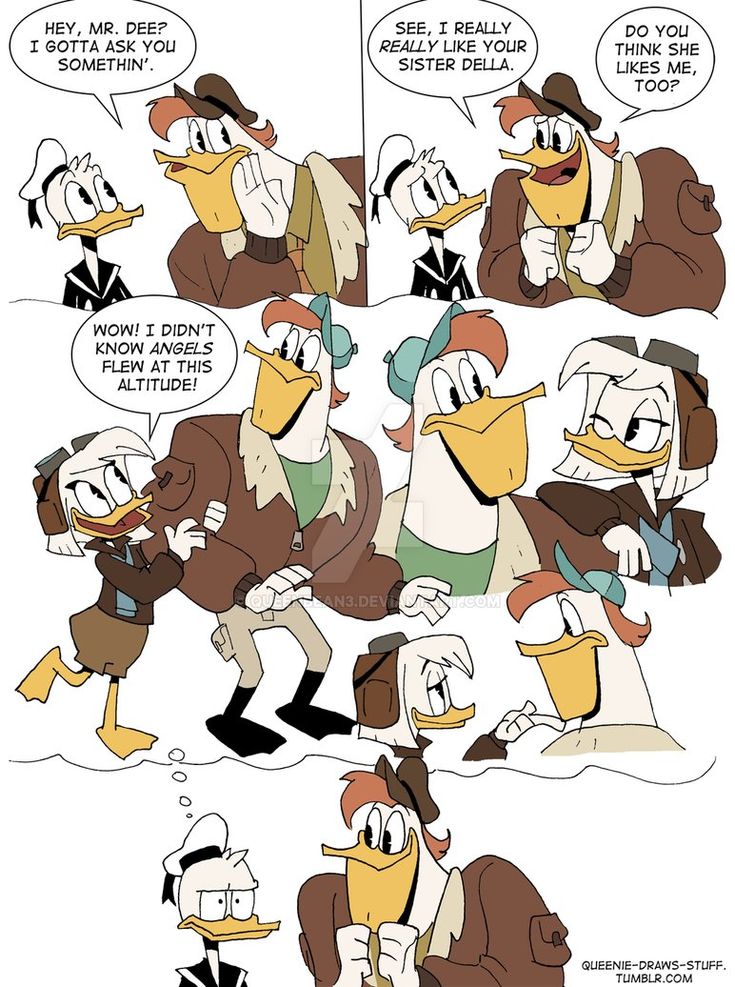 Duck meat is contraindicated for people suffering from excess weight and diabetes. However, even those who do not have problems with being overweight should not abuse duck. Everything is good in moderation.
Duck meat is contraindicated for people suffering from excess weight and diabetes. However, even those who do not have problems with being overweight should not abuse duck. Everything is good in moderation.
Looking for you
Quality duck meat is slightly shiny in appearance, it should be bright red when cut. When inspecting the carcass, you need to press on it with your finger - fresh meat is quite elastic and the dent on it will quickly disappear. The skin should be yellowish and non-sticky.
When choosing duck, medium-sized carcasses should be preferred, since lean duck meat is dry and tough, and over-fed poultry meat contains a lot of fat, which during cooking can add an unpleasant aftertaste to your dish. An important factor to consider when buying a duck is the age of the bird. Ideally, the duck should be no older than 6 months (for broilers - no older than 3 months), otherwise, during the cooking process, the meat may acquire a sharp unappetizing smell.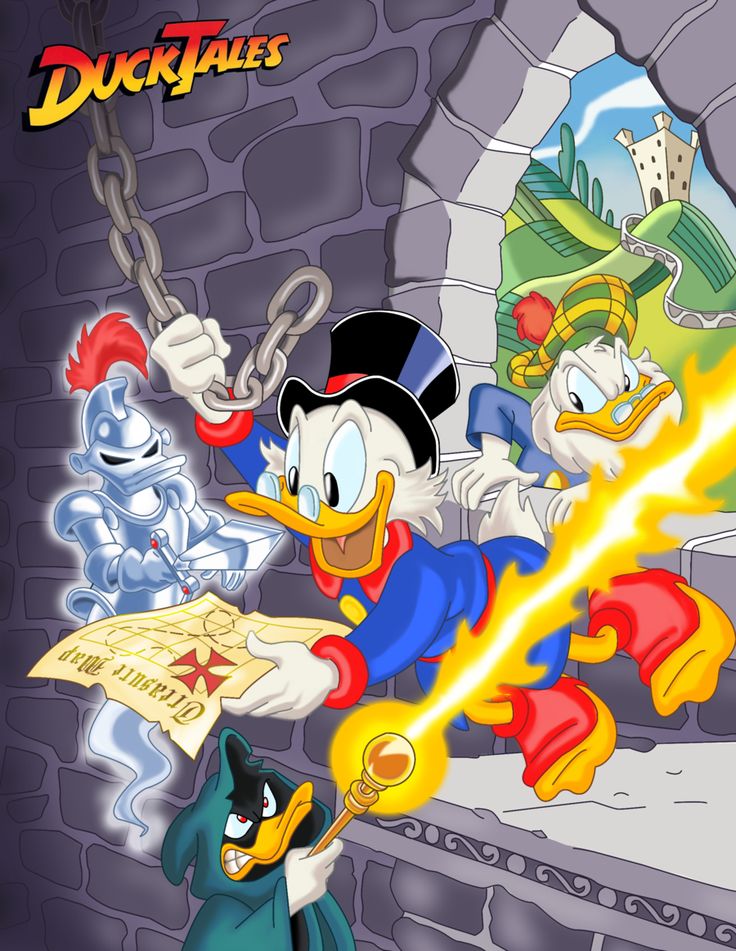 The main features by which a young individual can be identified are a soft beak and yellow paws. Duck fat should be transparent.
The main features by which a young individual can be identified are a soft beak and yellow paws. Duck fat should be transparent.
Shelf life of fresh duck:
At temperatures from 0 to -4̊̊С - up to 3 days;
At a temperature of -15̊С - up to 3 months;
At a temperature of -25̊С - up to a year.
Aerobatics
Among the most popular duck dishes are foie gras, duck confit, Peking duck and the traditional European and American Christmas dish - duck with apples. Duck meat is great for making soups, stews and pilaf. Duck can be grilled and in the oven, stewed, steamed and fried in a pan.
Stewed duck was one of the delicacies served at the table of the Aztec Emperor Montezuma.
Vegetables (potatoes, carrots, cabbage or pumpkin), fruits (apples and tangerines), rice with olives, buckwheat with champignons and parsley are perfect as a side dish for duck. You can emphasize the taste of the bird by serving it with pomegranate, cranberry or orange sauce.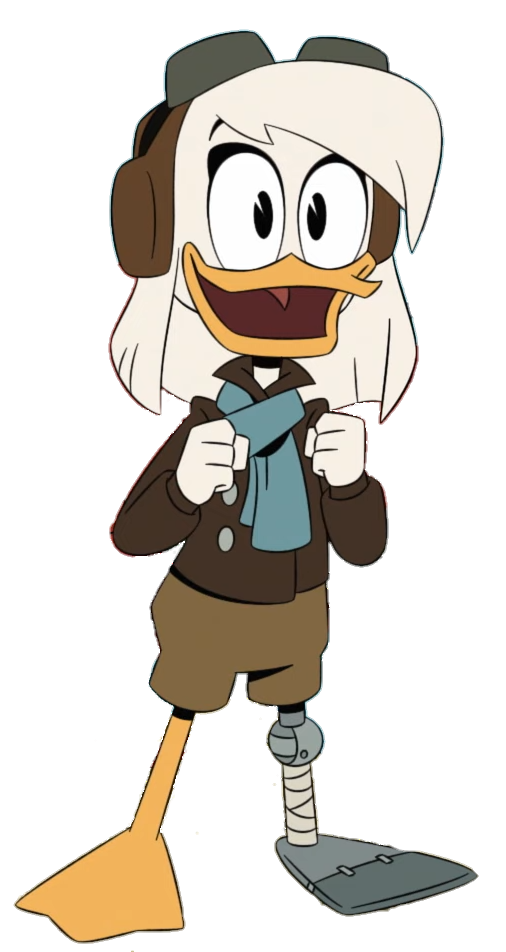
Apples stuffed with duck during baking absorb a lot of fat, so they should not be eaten.TURPANIES, or SINGI, Pegans, or Ogari Shironokonoska Ducks-Frips wood, or whistling, ducks Sviyazi Caroline duck.White Peking duck Breeding ducks. Eggs. Meat. Feathers. Diseases of ducks. DUCKS, a group of genera of webbed-footed water birds belonging to the family Anatidae, which also includes geese and swans. Ducks differ from them in their relatively small size, short legs and neck, somewhat flattened body, and usually unequal plumage coloration in males and females. Like geese, swans, and flamingos, ducks along the edges of their beaks, on their inner side, have transverse tooth-like ridges - plates - for straining food particles from silt or water. Numerous species of ducks are found in freshwater bodies of water and seas around the world.
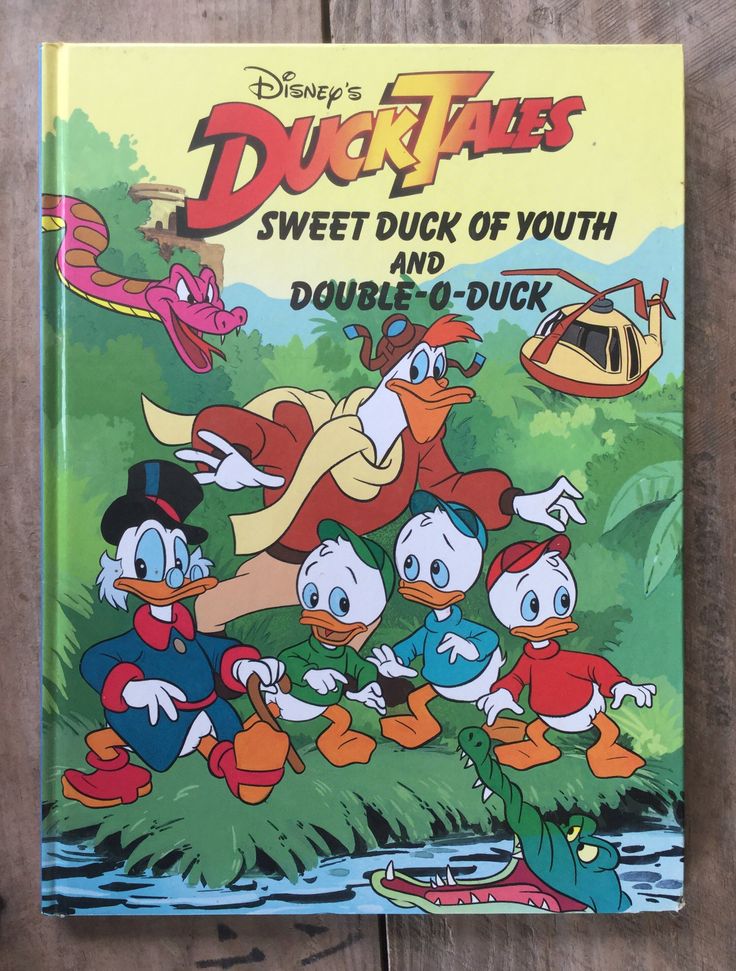
WILD DUCKS
The American Ornithologists Union classifies wild ducks into two subfamilies and six tribes (a tribe is a taxon below a subfamily but above a genus). The goose subfamily (Anserinae) includes one of their tribe - tree, or whistling, ducks (Dendrocygnini), which are closest to geese. The rest of the species make up the subfamily Anatidae, which includes five tribes: Tadornini (shelducks), Cairinini (musky ducks and their close relatives), Anatini (real, or river ducks), Aythyini (diving), Mergini (eiders, turpans, mergansers and related taxa). Anatini are especially well known as these ducks are surface foragers and are found mainly in fresh water. They forage in shallow waters, plunging their head and front part of the body into the water, and leaving the back on top. This tribe includes the common mallard, American black mallard, gray duck, pintail, teal, American and common wigeon, shoveler, Carolina duck and mandarin duck. Aythyini are also well known, i.
e. diving ducks that inhabit fresh and brackish waters; foraging or escaping from predators, they dive and swim underwater. This tribe includes the American, long-nosed, and common red-headed pochards, black-tailed pochards, and some other species.
Gray duck
( Anas strepera ) breeds in southwestern Canada and northern United States and winters in the southern states and most of Mexico. The male is more slender, mostly gray with a white belly, black uppertail and a white spot on the trailing edge of the wing. The female is brownish, mottled. This herbivorous bird is a popular object of sport hunting.
Mallard
( Anas plathyrhynchos ) breeds in the subarctic and temperate regions of the Old and New Worlds, and winters much further south - in North Africa, in the south of China and Mexico, in Japan and Florida. It is the ancestor of most domestic duck breeds and one of the most studied birds in the world.
The American Black Mallard
( Anas rubripes ) with its dark brown coloration and white wing lining is unmistakable by its appearance in flight.
Both sexes are colored similarly: they have dark plumage with a yellowish-brown head, and on the wing, as it were, a mirror with a purple metallic sheen. This species breeds in northern Canada and winters in the east and central United States, reaching the Gulf of Mexico.
Pintail
( Anas acuta ) is easily recognizable by its long, finely pointed tail. It breeds in the Arctic and northern temperate zones and winters in the southern United States, northern South America and India.
Teal
are approximately 15 species of ducks distributed throughout the world. The best known in the US is the Carolina teal ( Anas carolinensis ), which breeds in temperate areas of the Northern Hemisphere and winters almost throughout the US and in Mexico. The male is a small beautiful bird of gray color, with a green spot on the chestnut head and a bright metallic-green mirror on the wing. The female is motley, brownish, with a green mirror.
Brown teal ( A. cyanoptera ) - chestnut, with a bluish mirror.
Gogols
constitute the genus Bucephala . Just goldeneye ( B . clangula ) breeds in the northern regions of the Old and New Worlds, and spends the winter in temperate latitudes. The male is mostly white, with a black top, white wing markings, a fluffy, black head with a green sheen, and a large white patch between the eye and bill. The female is grey, with a dark brown head. Icelandic goldeneye ( B. islandica ) breeds in Iceland, Greenland and the mountains of northwestern North America. Males are about the same as those of the common goldeneye, but they have a purple head, more white on the wings, and a crescent-shaped facial spot. Lesser goldeneye or tadpole ( B . albeola ) is one of the smallest ducks. This species breeds in the subarctic regions of America, and winters in the territory from the Great Lakes and southern Canada to the Gulf of Mexico and Mexico.
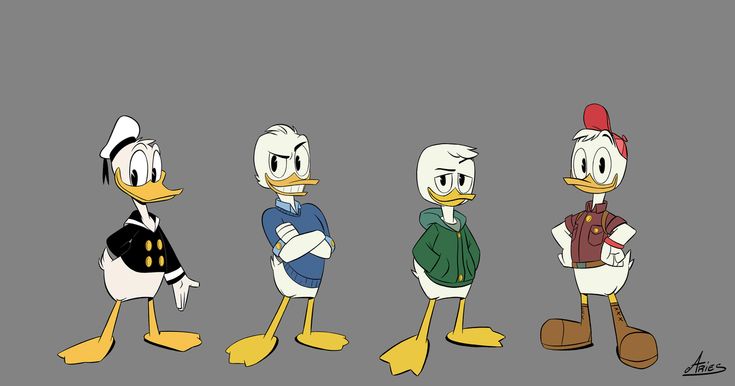
Red-headed pochard
( Aythya ferina ), common in the Old World, is a close relative of the long-nosed and American red-headed pochards. In appearance, as it were, it occupies an intermediate position between them. It breeds from the British Isles to central Siberia and winters in India and along the banks of the Nile. Nests are arranged above water in dense thickets of reeds or other aquatic plants.
American red-headed pochard
( Aythya americana ) breeds in southwestern Canada and the western United States, and winters in the southern states and northern Mexico. Outwardly, it resembles a long-nosed red-headed pochard, but its beak is shorter and its forehead is higher. The male is grey, with a dark rufous head and neck and a black breast. The female is brownish. In the western United States, this species is found in swamps and lakes on the prairies, and in the east in sea waters.
Long-nosed red-headed pochard
( Aythia valisineria ) breeds in the American Northwest, where it builds nests in grass or sedge thickets near water, and winters in most of the United States and in Mexico.
Being popular among game lovers, this species has suffered greatly from sport hunting.
Ducks
- several species of ducks from the genus Aythya . The male Black Black ( A. marila ) is whitish, with a black rump, head (with a green tint), neck and wings, along the rear edge of which a wide white stripe runs. The species breeds in arctic and temperate regions around the world. In the United States, it is found almost exclusively in the west and northwest of the country. The lesser scaup ( A. affinis ) is similarly colored, but the head has a purple tint. Its range is approximately the same as that of the Black Sea.
Eiders
- ducks of 4 species combined in the genera Sumateria , Polysticta (2 species) and Lampronetta . They are large birds that breed on the arctic and subarctic coasts of the Atlantic and Pacific Oceans and are so cold hardy that they rarely migrate to temperate areas, even in harsh winters.
Males have beautiful, mostly white plumage with black, pink, cerulean, or greyish blue markings. Females are brown with black spots. Female common eider living in the North Atlantic ( S. mollissima ) serve as a source of eider down. Females pluck fluff from their breasts and line nests with it, from where it is collected at the end of the breeding season.
Mergansers
- ducks of several species from the genera Lophodytes and Mergus . These are fish-eating seabirds with a narrow, serrated beak that, while diving, pursue prey underwater. Most of them nest in the temperate and subarctic regions of the Northern Hemisphere, and fly south for the winter. There are three species found in the USA. Male merganser ( M. merganser ) mostly white with black upperparts, green shimmery black head, and a slight peach tinge on the chest. The female is grey, with a crested reddish-red head. The long-nosed or medium-sized merganser ( M. serrator ) is similar to a large, but not as white, chest of rusty color, and in both sexes a crest is clearly visible on the head.
The male Crested Merganser ( L. cucullatus ) is black and white, with a large fan-shaped crest, which he can straighten at will. The female is dull brownish, with a small yellow crest.
Muscovy duck
( Cairina moschata ) is a dense, black and white bird from the New World tropics, where it occurs from Mexico to Brazil. It differs from other ducks in its more developed wings, stronger skeleton, elongated body and tail, as well as red fleshy growths on its head. The species has been successfully domesticated and produces finely fibrous meat.
Long-tailed Duck
( Clangula hyemalis ) occurs throughout the Northern Hemisphere. It breeds in the Arctic, and winters along the sea coasts of the northern United States, occasionally reaching California and Florida. Males are mostly white, with black wings and a wide transverse stripe on the belly. Females are colored in a similar way, but darker and without a stripe. Long-tailed ducks feed on crustaceans and are considered inedible.
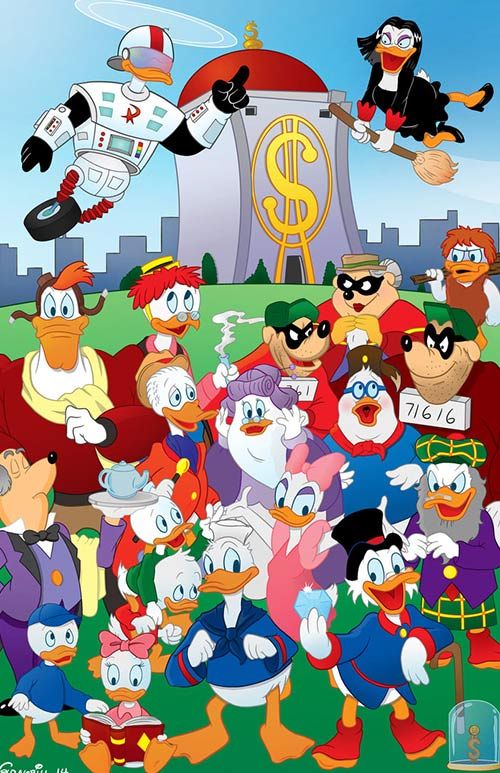
American duck
( Oxyura jamaicensis ) is the only North American duck that cannot walk on the ground. Rusty-red, with white cheeks and a dark cap, the male is in the habit of holding his long tail upright. The female is brownish grey. The species breeds in northwestern Canada and the far western United States, and winters on both the Pacific and Atlantic coasts of these countries.
Turpans, or sings,
are large sea ducks from genera Melanitta and Oidemia . They breed in the subarctic and temperate regions of the Northern Hemisphere and winter off the coasts of China, Japan, California, North and South Carolina and the Mediterranean. Turpan ( M. fusca ) is a European species. Three species are found in the USA. Their males are heavy blackish birds. The hawk-nosed scoter ( M. deglandi ) is distinguished by a white undereye mark and a square white spot on the trailing edge of the wing. The variegated scoter ( M.
perspicillata ) white spots on the head and neck are noticeable. The black scoter, or singa ( O. nigra ), is the only completely black duck in North America. All Turpans are characterized by a brightly colored beak swollen at the base; They feed mainly on marine molluscs.
Sheldocks, or shelducks
( Tadorna ), are widespread in the temperate and tropical regions of the Old World. These are large ducks that feed on the surface of the water.
Broadshoes
have a large, scoop-like beak. Only one of the group's species, the common shoveler ( Spatula clypeata ), is found in North America; the rest are in Australia, New Zealand, South America or Africa. The shovel-nosed breeds in the temperate and subarctic zones of the Old and New Worlds, and winters in northern Africa, India, China, Japan, California, the southeastern United States and northern South America. The color of the male is black and white, with a reddish belly and sides, a black, shimmering green head and a pale blue mirror on the front of the wing.
The female is mottled, brownish, with a blue areolet on the wing.
Steamboat ducks
( Tachyeres ) are four species of large diving birds from the southern regions of South America. Three species are incapable of flight, and one of them, T. leucocephalus , was described only in 1981. to the geese. They are found in tropical regions throughout the world and in places in the temperate zone. They have a long neck and legs, and their paws are able to clasp the branches of trees, on which, however, they rarely take off. The color combines brown, gray, chestnut, black and white. In the USA, the so-called. autumn duck ( D. autumnalis ) is found in south Texas, and the red whistling duck ( D. bicolor ) is found from central California to southwestern Louisiana.
Svyazi
( Mareca ) is a genus that unites three species of ducks. The American Wigeon (M. americana ) is a North American species that breeds from the subarctic regions of western Canada to the northwest and north of the United States, and winters from Long Island to the Gulf of Mexico, Central America and the West Indies.
Just a pigeon ( M. penelope ) breeds in Northern Eurasia and winters in North Africa and India, but may also fly into the USA. The male is gray and resembles the male of the previous species, but is distinguished by a rufous-brown head with a yellow crown. The third type, the so-called. luxury wigeon ( M. sibilatrix ), found in southern South America.
Carolina Duck
( Aix sponsa ) is one of the most beautiful birds in North America. The plumage of the male combines black, white, bronze-blue, green and purple. The coloration of the female is less bright and is complemented by a white ring around the eye. Both sexes have a well-developed crest. The Carolina duck prefers small forest lakes and streams, and nests in the hollows of trees and stumps, from which the ducklings fly directly into the water or onto the ground. Feeds mainly on nuts. The species breeds almost throughout the United States and southern Canada, avoiding only the western prairies and open plains, and winters far to the south.
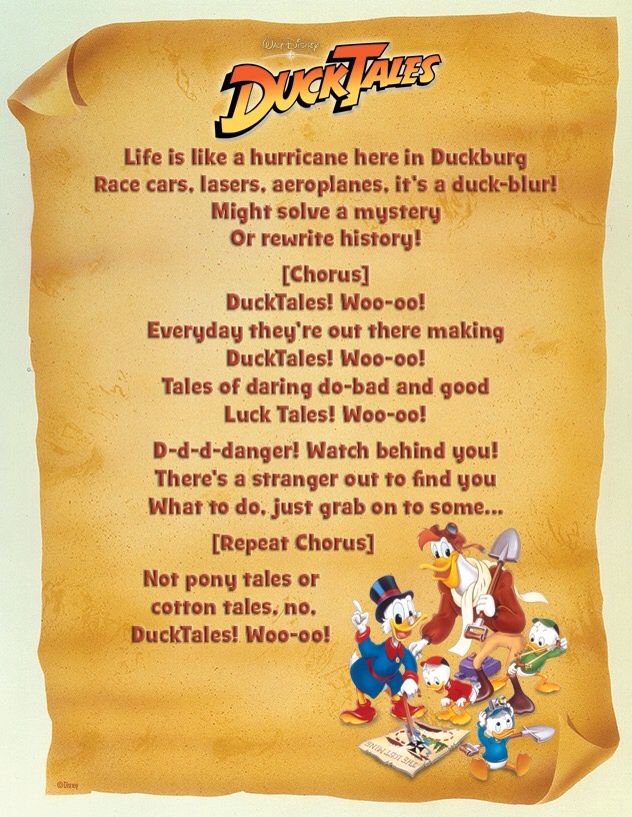
Mandarin duck
( Aix galericulata ) occurs in temperate East Asia. She nests in trees.
DOMESTIC DUCKS
All breeds of domestic ducks are believed to be descended from either the mallard or the musky duck. The mallard was domesticated in Europe around the first century AD, and the Muscovy duck in South America, probably some time before the 16th century. Most modern breeds are derived from these species by selection and crossbreeding, with the Rouen duck and the Indian runner retaining the colors of the wild mallard.
Breeds and classes.
The American Poultry Association has established standards for 12 duck breeds, which are divided into three classes. Meats include Peking white, Aylesbury, Musk, Rouen, Cayuga, Buff and Swedish; to egg - Indian runner and khaki campbell; to decorative - call, white crested and black east Indian runner.
White Pekin Duck
is the most important commercial breed in the USA.
These are squat, fleshy, slow-moving, but fast-growing birds covered with white plumage. The breed was imported from China but has been adapted to the economic needs of the American food industry. Its egg production is more than doubled, and the effectiveness of the use of feed by these birds for building meat remains unrivaled among domestic ducks.
Breeding ducks.
Breeding ducks is beneficial for farms of all sizes. They don't need perches or nests; enough canopy and straw bedding. Ducks eat greens, grains, kitchen waste - almost any food available on the farm, and do well on pasture. These birds can be bred even in the absence of a swimming pool, although its presence increases the efficiency of their breeding.
Eggs.
Egging ducks such as the Indian Runner or the Khaki Campbell lay eggs all year round. Duck eggs are larger than chicken eggs; a dozen weighs an average of 0.8–0.9kg. They are used in baking, they are eaten in England.
Meat.
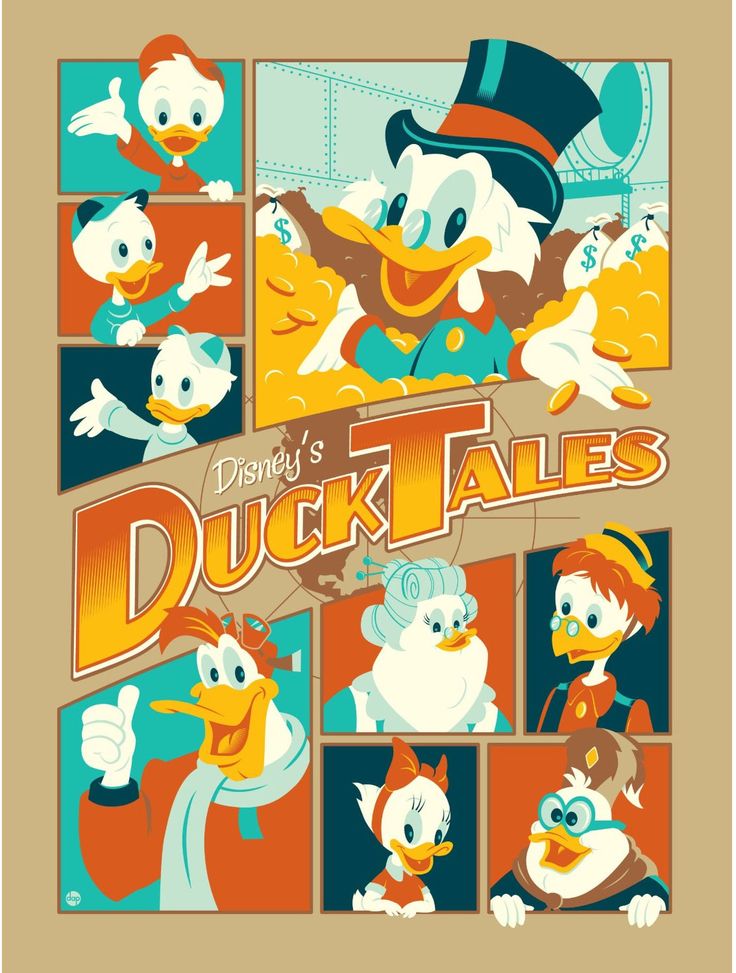
Learn more







